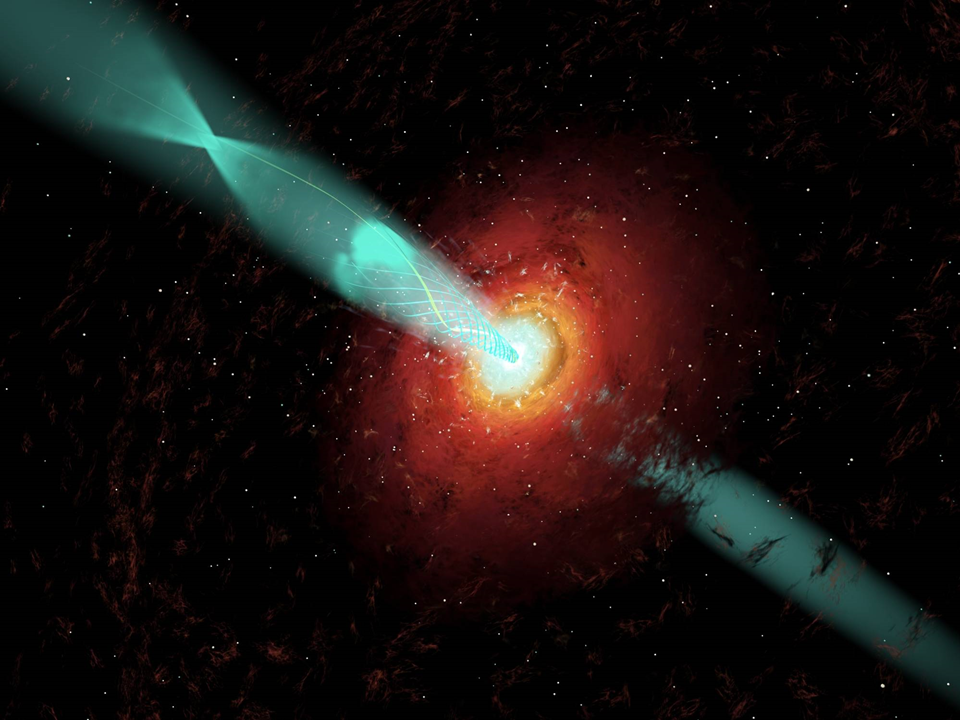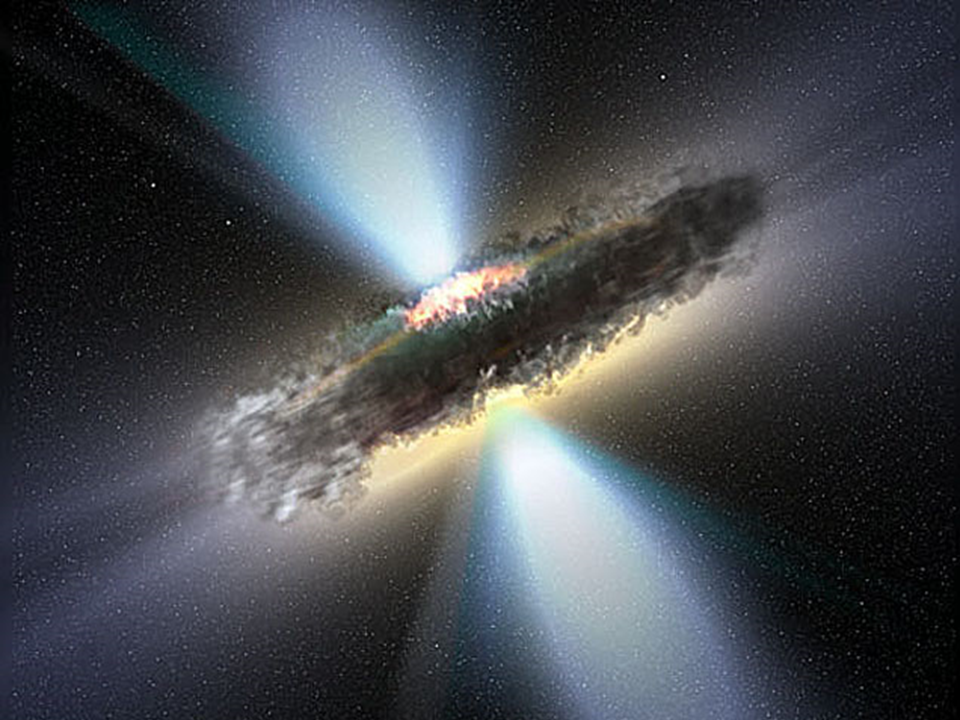PH 207 topics

The central engine of an active galaxy
Active supermassive black holes
- Extremely luminous
- Light spectrum is nonstellar
- Energy output is often variable
- Powered by accretion disks
-
Typically have jets
- Flow along magnetic field lines
-
Exhibit synchotron radiation
- Highly relativistic electrons in plasma

© 2005 Pearson Prentice Hall, Inc
The above diagram depicts the main parts of the central engine of an active galactic nucleus, namely a supermassive black hole surrounded by an accretion disk of hot gas. As the gas nears the black hole, some of the gas on the inner edge of the disk is redirected into jets along the rotation axis of the disk, channeled by the strong magnetic field of the system.
A synchotron is a particle accelerator, like the Large Hadron Collider, that accelerates particles using pulses from very strong magnets. When charged particles spiral along the magnetic field lines, they emit light with a spectral signature that is specific to this kind of motion, called synchotron radiation.
Synchotron radiation intensity decreases with frequency because the electrons are moving at relativistic speeds and experience length contraction. In a synchotron, the electrons moving radially toward the observer see a shortened distance, which gives them a longer wavelength. A similar effect is seen in an active galactic nucleus. We can use the information gained from the synchotron radiation to estimate the magnetic field strength of the active galactic nucleus.

This image was reproduced using information referred from data taken of the nearby Seyfert II galaxy NGC 4388, observed in x-ray light by the Chandra telescope and other space telescopes. The x-ray light was seen to fluctuate rapidly for very specific wavelengths, while other light was much steadier. This could mean that the light is moderated by a thick disk of dust and molecular gas.
This animation from Chandra depicts what it might look to peer down into an active galactic nucleus.

The above image was created from data taken by the Hubble telescope's Space Telescope Imaging Spectrograph (STIS). It shows evidence of an active galactic nucleus in the core of a galaxy. The Doppler shifted colors indicate rotation of the accretion disk, blue on the left is coming toward us, while red on the right is moving away. The STIS measured a velocity of 880,000 miles per hour (440 km/s) with 26 light years of the galactic center, indicating the mass of the central black hole to be about 300 million times the massive of the sun.
Image source